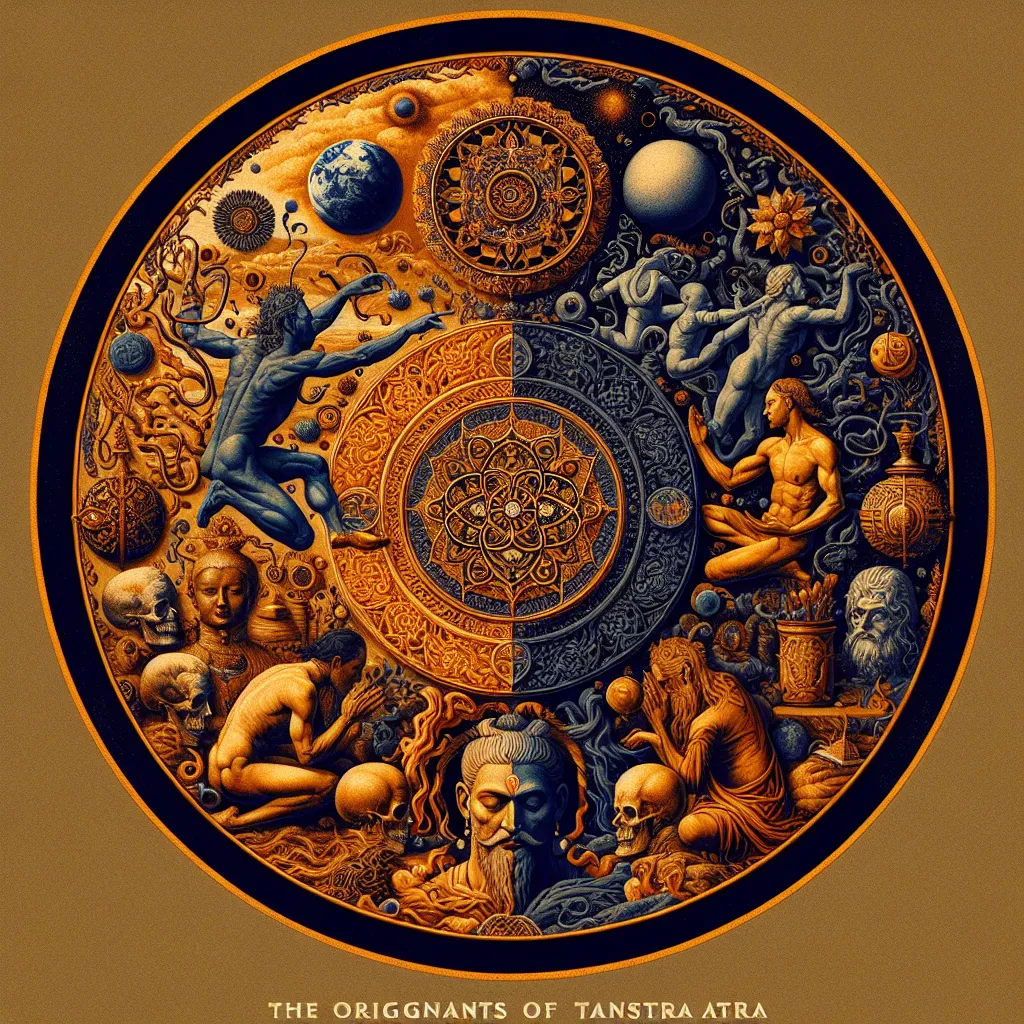
- Published on
- Authors

- Name
- You
The Origins of Tantra: Bridging the Worlds of Matter and Spirit
Embark on a journey through the annals of history and the ether of mystical wisdom as we explore the origins and evolution of Tantra. From the ancient sanctums of India's spiritual heartland to the intricate rituals of Hinduism and Buddhism, Tantra offers a profound connection between the material and the ethereal, the mundane and the divine.
Table of Contents
- [Ancient Beginnings: The Seed of Tantra](#a ncient-beginnings-the-seed-of-tantra)
- [The Expansion into Hindu Traditions](#t he-expansion-into-hindu-traditions)
- [Buddhist Tantra: The Vajrayana Path](#b uddhist-tantra-the-vajrayana-path)
- [Quantum Mechanics and Tantra: Mystical Parallels](#q uantum-mechanics-and-tantra-mystical-parallels)
- [The Modern-Day Fusion](#t he-modern-day-fusion)
Ancient Beginnings: The Seed of Tantra
Ancient India: a land of vibrant cultures, sacred rivers, and monumental temples. It is here that the seed of Tantra was first sown, an esoteric tradition bridging the worlds of existence and essence.
Early Texts and Practices
The roots of Tantra stretch deep into the Vedic traditions, around 1500 BCE, where early texts like the Rigveda hint at rituals and ceremonies that would later evolve into Tantric practices. These sacred rites were not only about invoking deities but about understanding the very fabric of reality.
| Text | Era | Significance |
|---|---|---|
| Rigveda | 1500 BCE | Early hymns with ritual elements |
| Upanishads | 800-200 BCE | Philosophical texts with mystical insights |
| Tantras | 5th century CE onwards | Codified texts of practices and rituals |
The Symbolism of Union
Tantra is fundamentally about the union - not just of the male and female, but of consciousness and energy, of spirit and matter. This duality and its reconciliation are central to Tantric philosophy.
The Expansion into Hindu Traditions
As centuries passed, Tantra permeated Hinduism deeply, influencing rituals, art, and spiritual practices.
Shaivism and Shaktism
Two principal branches of Hinduism where Tantra flourished are Shaivism (worship of Shiva) and Shaktism (worship of Shakti).
- Shaivism: Shiva, the meditative ascetic, embodies supreme consciousness. Tantric practices involve intense meditation, rituals, and symbolism to connect with this divine consciousness.
- Shaktism: Shakti represents divine feminine energy. Tantric rituals in Shaktism are about harnessing and awakening this energy within oneself, often through mantras, yantras, and sacred rites.
Buddhist Tantra: The Vajrayana Path
Parallel to its evolution in Hinduism, Tantra found a profound expression in Buddhism, particularly in the Vajrayana tradition. Vajrayana, or "The Diamond Path," is one of the fastest routes to enlightenment, integrating Tantric practices with Buddhist philosophy.
Key Elements
- Deity Yoga: Meditative practices involving identification with a deity to embody their enlightened qualities.
- Mandalas and Mantras: Sacred geometrical designs and sound formulas used to focus the mind and invoke spiritual energy.
| Practice | Purpose |
|---|---|
| Deity Yoga | Embodying divine qualities |
| Mandalas | Focusing spiritual energy |
| Mantras | Invoking specific deities and energies |
Quantum Mechanics and Tantra: Mystical Parallels
The world of quantum mechanics reveals a universe where particles exist in multiple states at once, where consciousness seems to influence matter. Interestingly, these discoveries echo Tantric wisdom.
The Observer Effect and Consciousness
In quantum mechanics, the observer effect suggests that the mere act of observation changes the state of a quantum system. Tantra has long held that consciousness shapes reality, a belief mirrored in the observer effect's implications.
Entanglement and Interconnectedness
Quantum entanglement shows how particles, once connected, remain linked across vast distances. This interconnectedness is a cornerstone of Tantric philosophy, which teaches that all existence is interwoven in a cosmic web.
The Modern-Day Fusion
Today, Tantra continues to captivate and enlighten seekers worldwide. It bridges ancient wisdom and modern understanding, providing a spiritual path that honors both the material and the mystical.
Contemporary Practices
From yoga studios to meditation retreats, Tantra's influence is evident. Modern interpretations balance traditional rituals with innovative practices, creating a dynamic, evolving path for spiritual growth.
- Tantric Yoga: Combines physical postures with breath control and meditation to awaken spiritual energy.
- Meditative Practices: Integrates mindfulness and visualization techniques derived from ancient Tantric rituals.
As we conclude this exploration, remember that Tantra is more than a historical tradition; it is a living, breathing path that offers profound insights into the mysteries of existence. It beckons us to transcend the ordinary and embrace a cosmic dance of energy and consciousness, forever bridging the worlds of matter and spirit.
